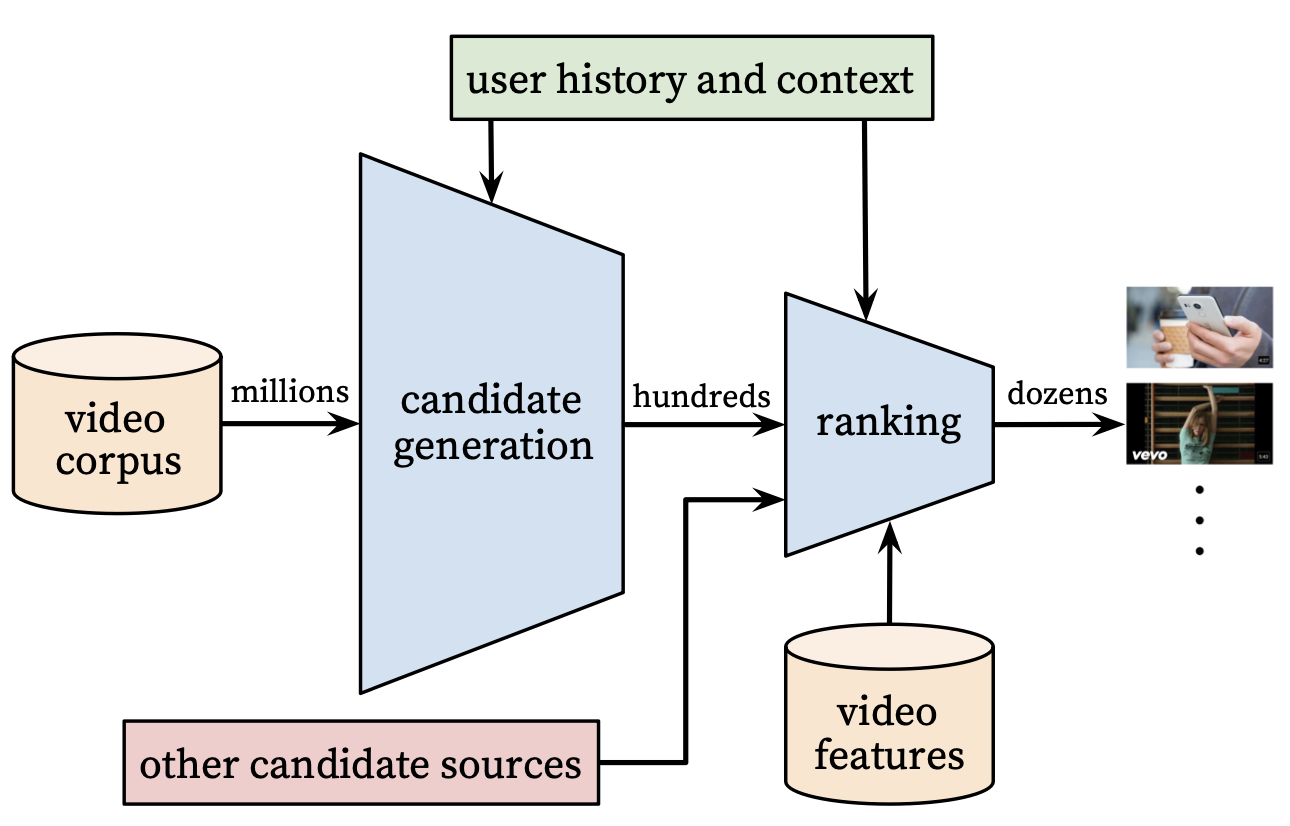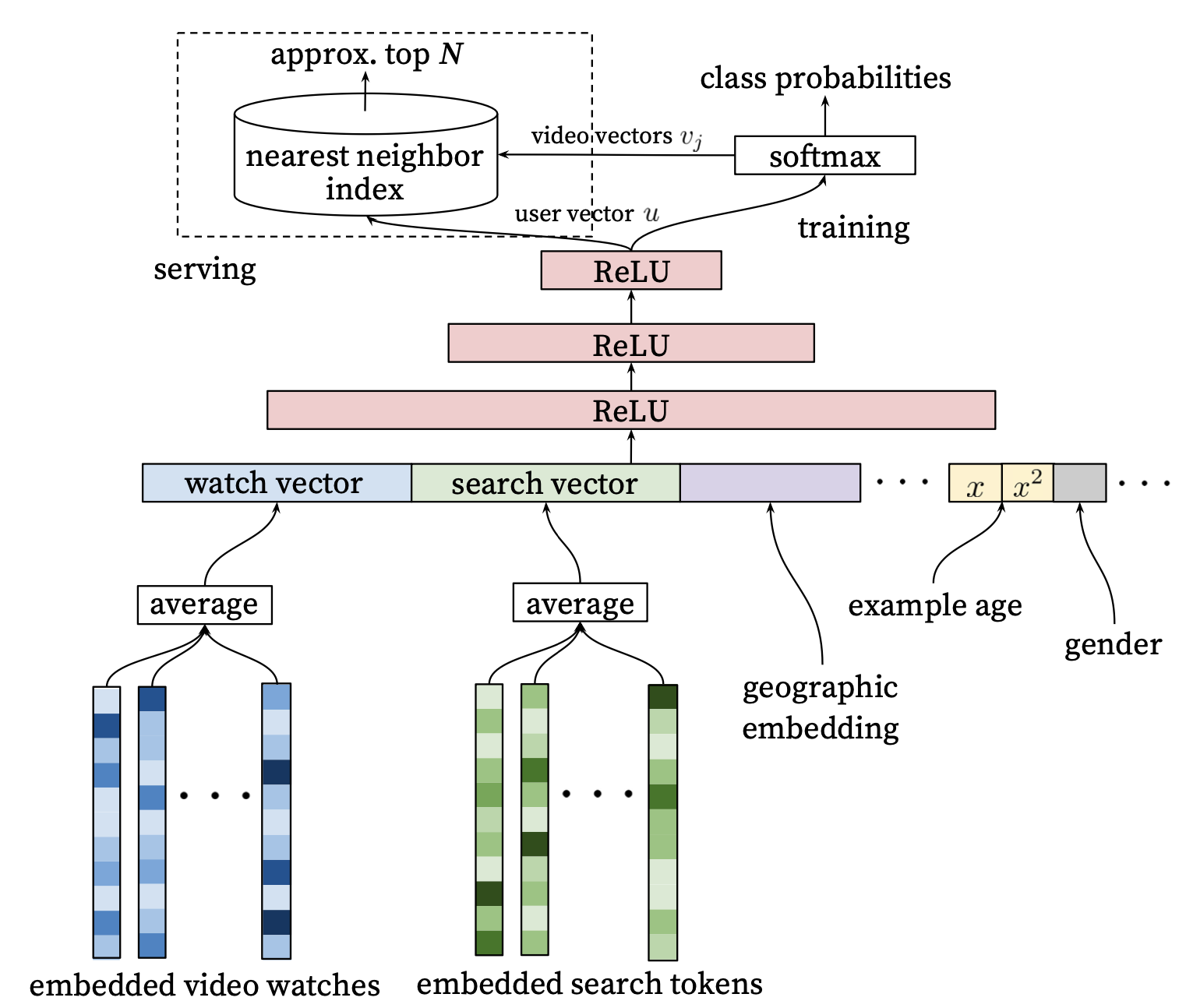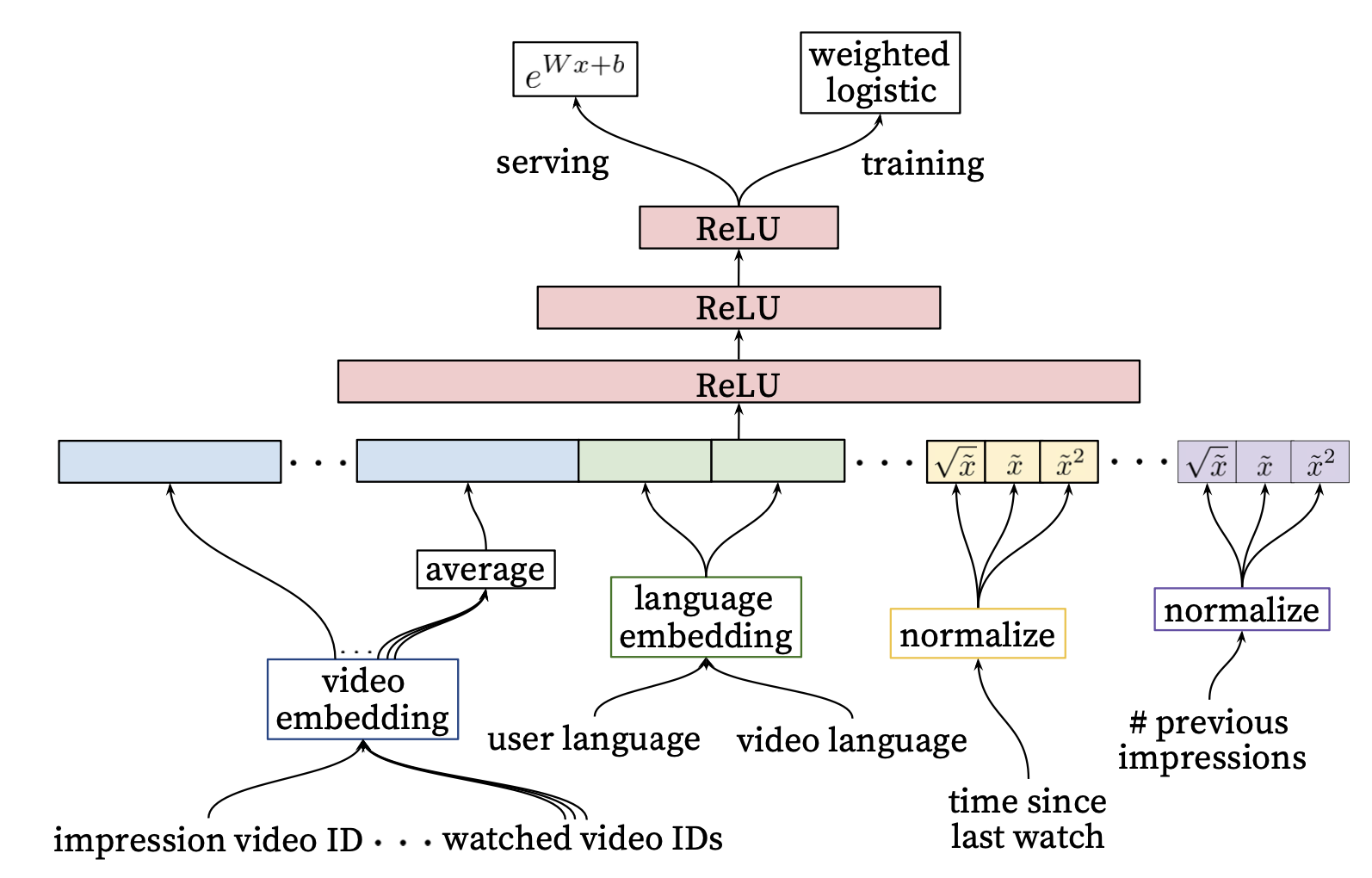Analysis of Deep Neural Networks for YouTube Recommendations
-
date_range 10/09/2022 22:30 info
Here we introduce a Youtube’s recommendation system based on deep neural networks. It consists of a deep candidate generation model and then a separate deep ranking model. Youtube recommendations have to deal with scalability, freshness and noises of user feedbacks. The two-stage of this model can get a small personalized and accurate recommendation for users from a large of millions of videos.

The candidate generation architecture

-
The purpose of candidate generation is to get a high recall.
-
Input features for candidate generation: each user’s YouTube activity history (IDs of video watches, search query tokens and demographics, geographic and device features.)
-
Offline evaluation: precision, recall, ranking loss… Online evaluation: A/B testing measuring click through rate, watch time.
-
It models as extreme classification each video \(i\) is a class.
-
It uses the implicit feedback of watches to train the model, where a user completing a video is a positive example.
-
It uses a user’s history only to predict future watch instead of a held-out watch, which leaks future information.
-
Sample negative classes with importance weighting are used for classification speedup.
-
Training examples ages are used as additional features to deal with the freshness of recommendation.
-
It generates a fixed number of training examples per user, effectively weighting our users equally in the loss function, as this prevents a small cohort of highly active users from dominating the loss.
The Ranking architecture

-
Ranking uses the similar deep neural network architecture as candidate generation, which assigns an independent score to each video impression using weighted logistic regression.
-
The positive (clicked) impressions are weighted by the observed watch time on the video. Negative (unclicked) impressions all receive unit weight.
-
Proper normalization of continuous features was critical for convergence.
-
It is to predict expected watch time given training examples that are either positive (the video impression was clicked) or negative (the impression was not clicked).
-
For inference we use the exponential function ex as the final activation function to produce these odds that closely estimate expected watch time.
Code implementation
Youtube data is not public. We uses a small sampled movieLen dataset to simply implement a basic architecture.
Deep neural network recommendation tested in MovieLen dataset
Reference:
Covington, P., Adams, J. and Sargin, E., 2016, September. Deep neural networks for youtube recommendations. In Proceedings of the 10th ACM conference on recommender systems (pp. 191-198).
